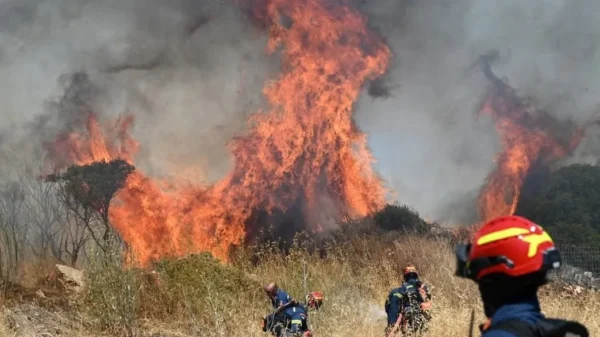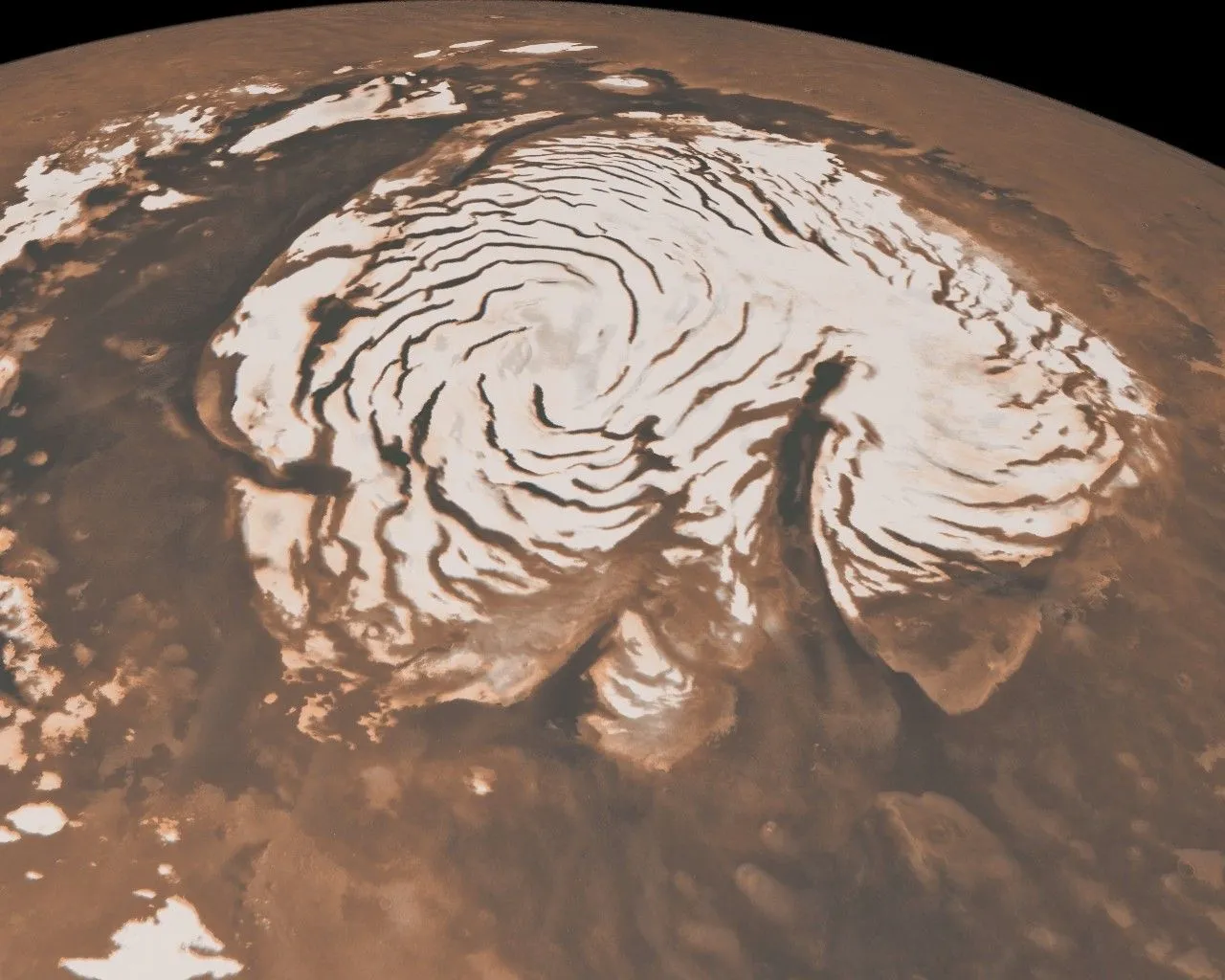Springtime on Earth brings blooming flowers and warmer weather, but on Mars, it’s a season of dramatic and violent change. As temperatures rise, frozen carbon dioxide—also known as dry ice—sublimates, transitioning directly from a solid to a gas. This transformation triggers powerful natural events, including massive avalanches, explosive geysers, shifting sand dunes, and bizarre spider-like formations carved into the landscape.

NASA’s orbiting spacecraft, including the Mars Reconnaissance Orbiter and Mars Global Surveyor, have spent years observing these planetary shifts. Researchers like Selina Diniega from NASA’s Jet Propulsion Laboratory describe Martian spring as a chaotic period filled with constant gas and ice eruptions. According to her, spring on Mars is “explosive” and “very noisy,” marked by dramatic environmental activity.
Mars experiences distinct seasons due to its 25-degree axial tilt, much like Earth. However, because a Martian year lasts 687 Earth days, each season stretches out to nearly twice the length of those on our planet. The most recent transition into spring for Mars’ northern hemisphere began on November 12, 2024. This shift has kicked off a series of remarkable natural phenomena, with even more intense activity expected in late 2025 when the southern hemisphere enters its spring season.
One of the most visually striking events of Martian spring is the eruption of CO2 geysers. As frozen carbon dioxide in the ground thaws, pressure builds up beneath the surface until it explosively releases gas and dust into the thin Martian atmosphere. The result is dark fan-shaped markings that spread across the landscape. Scientists predict these geysers will be at their peak in December 2025 when the seasonal transition reaches the planet’s southern hemisphere, an area known for even more dramatic sublimation-related activity.
Avalanches are another major feature of Martian spring. Rising temperatures weaken the stability of ice-covered slopes, causing massive blocks of dry ice and rock to collapse. NASA spacecraft have captured images of these events, including a particularly dramatic avalanche in 2015 in which a 20-meter-long chunk of dry ice broke off a cliff and tumbled down the surface. These collapses frequently reshape the terrain and provide valuable insights into how Mars’ geological features evolve over time.
As spring progresses, the rise in temperature also has a significant impact on Martian sand dunes. Like those on Earth, these dunes slowly shift due to wind activity. However, what makes Martian dunes unique is the influence of sublimating CO2 frost, which can loosen sediment and accelerate movement. This process not only reshapes landscapes but also helps scientists study wind patterns and surface conditions on the Red Planet.
One of the most mysterious and fascinating Martian springtime features is the appearance of spider-like formations, also known as araneiform terrain. These sprawling networks of dark, branching shapes, some exceeding one kilometer in width, form when trapped CO2 gas bursts through the surface, carving out intricate patterns. First observed in 2009, these formations remain a subject of active research at NASA’s Jet Propulsion Laboratory. Scientists have even attempted to recreate similar conditions on Earth to better understand how these patterns develop.
Spring on Mars also has a profound impact on the planet’s polar ice caps. The northern ice cap, which spans over 1,000 kilometers—roughly the size of Texas—undergoes distinct seasonal changes. Winds shaped by the Coriolis effect, a force resulting from the planet’s rotation, create mesmerizing spiral formations in the ice. One of the most breathtaking features of the northern ice cap is Chasma Boreale, a massive canyon stretching 450 kilometers long and two kilometers deep, comparable in scale to Earth’s Grand Canyon.
While Mars remains a frigid and barren world, its surface is anything but static. Each year, as spring arrives, its landscape transforms through a series of violent yet mesmerizing natural events. Explosive geysers launch gas and dust into the sky, avalanches carve new scars into cliffs, wind-driven dunes continue their slow migration, and strange spider-like patterns emerge from beneath layers of dry ice.
According to Selina Diniega, if a person were standing on Mars during this time, they would experience the deafening sounds of cracking ice and sudden gas eruptions echoing through the thin atmosphere. Observations from NASA’s missions continue to reveal how these extreme seasonal changes shape the Red Planet’s surface.
As future human exploration of Mars becomes a reality, understanding these seasonal transformations will be crucial. Not only will this knowledge enhance our ability to study the planet, but it will also play a key role in developing strategies for establishing human outposts on one of the most challenging landscapes in the solar system.
















































